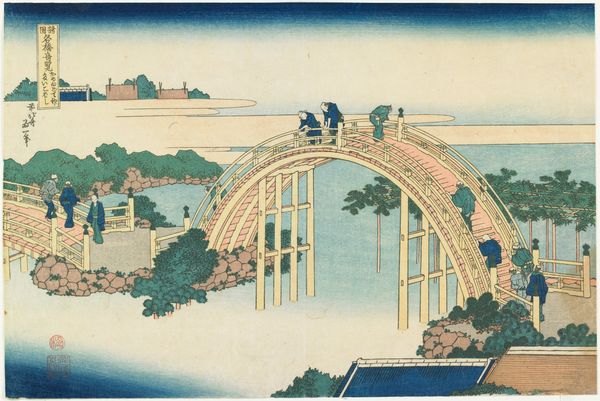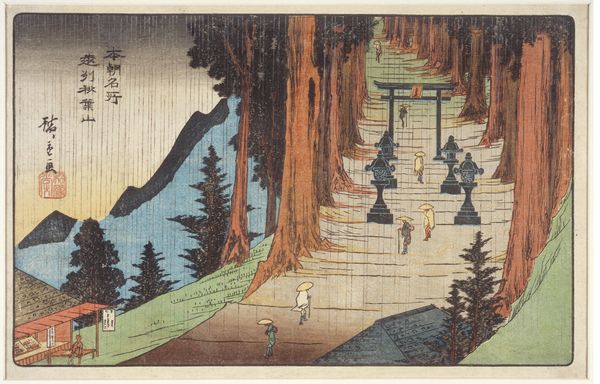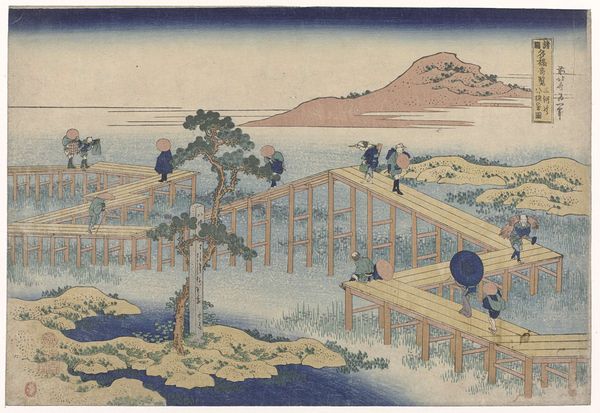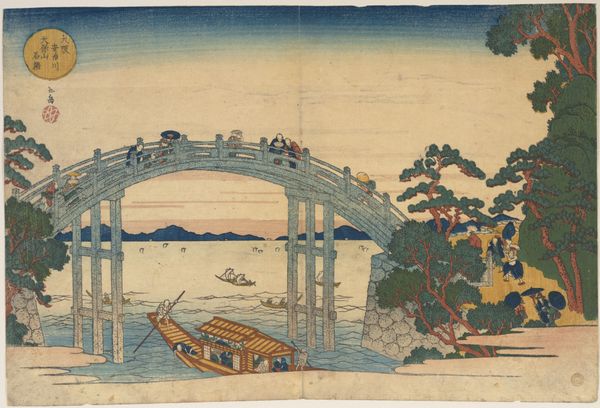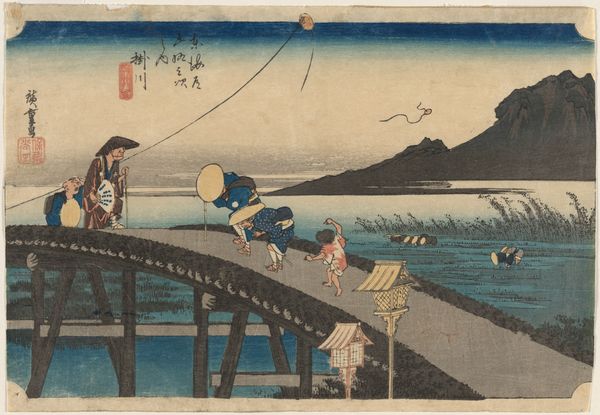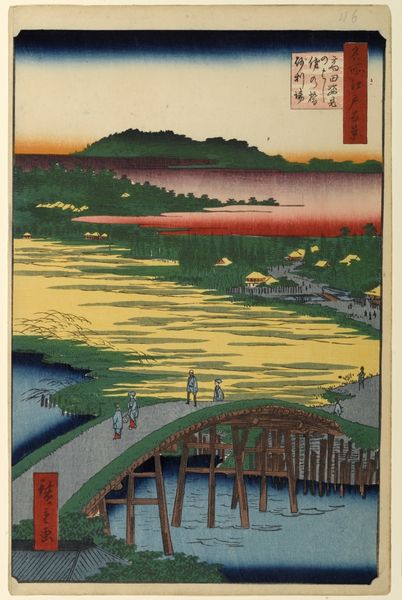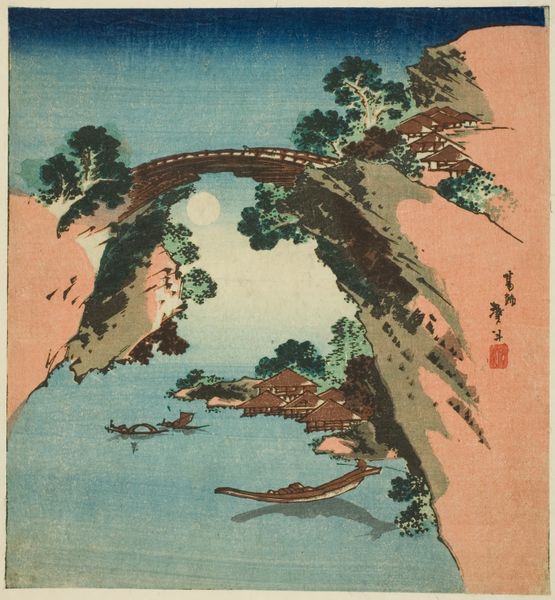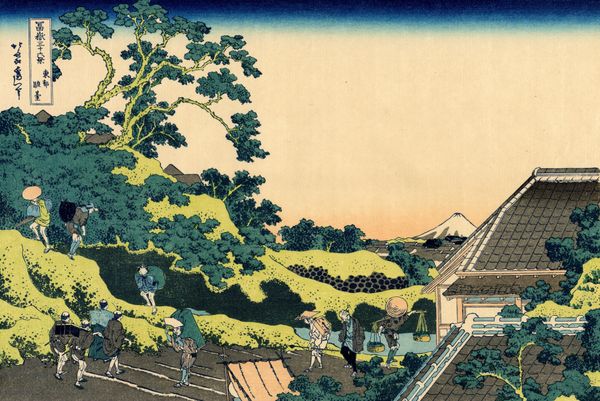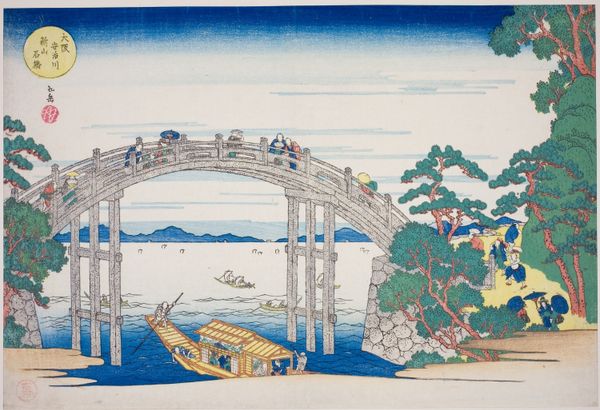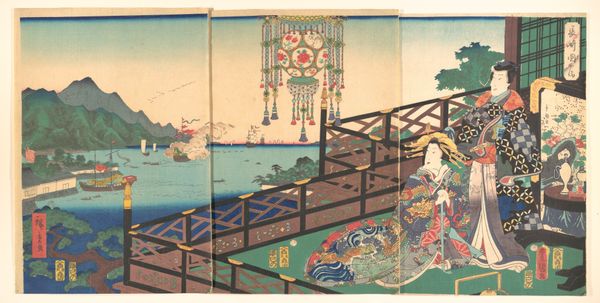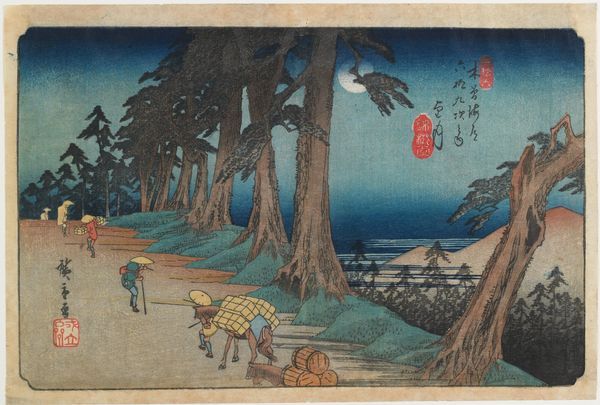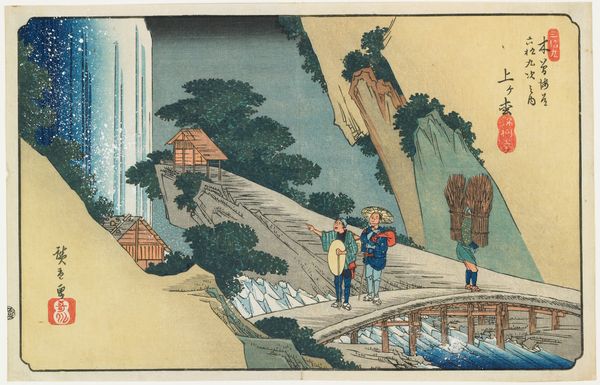
Moonlight View of Suihiro Bridge, Tempozan 1838
0:00
0:00
print, woodblock-print, woodcut
# print
#
asian-art
#
landscape
#
ukiyo-e
#
woodblock-print
#
woodcut
#
cityscape
Dimensions: H. 10 1/8 in. (25.7 cm); W. 14 15/16 in. (37.9 cm)
Copyright: Public Domain
Curator: Before us is Yashima Gakutei’s "Moonlight View of Suihiro Bridge, Tempozan," a woodblock print from about 1838. It currently resides here at the Metropolitan Museum of Art. Editor: My first thought is how calming this night scene is. The textures and color palette are exquisite – the luminous moon, the delicate ripples on the water, and the bold geometry of the bridge itself all create a harmonious visual experience. Curator: Absolutely. The image is a product of the Ukiyo-e tradition, showcasing leisure and entertainment districts. Here, we see the Tempozan area, a popular destination near Osaka, transformed under the soft glow of the moon. It captures a specific moment, but also reflects broader social trends. Editor: What strikes me are the layers of craft involved in producing this print. From the initial design and carving of the blocks to the printing itself, and then distribution as it would have been consumed as a part of enjoying that district's attractions and leisure. There’s a story of labor embedded in this object. Curator: Yes, Ukiyo-e prints were not just art objects; they were also commodities circulated widely. The figures populating this scene, crossing the bridge or riding the boat, give us a glimpse into the bustling night life and leisure activities of the time, making it relevant and reflective of urban life. Editor: Right. You can also consider the materials: the wood, the pigments, and paper itself and the techniques required for registering so many blocks precisely on a small format to realize the desired outcome. How was this image accessible and consumed compared to say, paintings that may only be available to wealthy individuals in court? Curator: It's interesting to ponder Gakutei’s intentions here. Was he celebrating the accessibility of these spaces, or perhaps critiquing the social order subtly by showing everyone mixing? This work provides a snapshot of a very dynamic society undergoing constant change. Editor: In observing the layered process, labor and access, it’s interesting to reconsider "low" versus "high" art as traditionally defined in opposition of skill versus craft and unique authorship and commodity, since they challenge traditional hierarchical notions of artistic value. Curator: Thinking about Gakutei’s print in that light has really broadened my perception. The interplay between artistry, society, and the mechanisms of distribution make the print such a compelling object of study. Editor: For me, engaging with this print deepens my respect for all those skilled workers behind it and how something so commonplace becomes elevated through dedicated attention and focus to the craft.
Comments
No comments
Be the first to comment and join the conversation on the ultimate creative platform.
